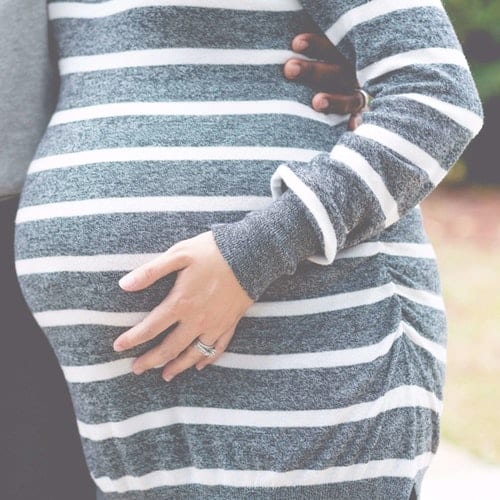Secondary infertility is the inability to become pregnant or carry a pregnancy to term after you’ve already had a baby. It is more common than you might think, accounting for about 50 per cent of infertility cases. In fact, more couples experience secondary infertility than primary infertility (infertility the first time around).
It’s especially common in women who wait until their late 30s or even 40s, when fertility takes a nosedive, to have their second babies.
As with regular infertility, it is diagnosed in women who can’t seem to conceive after trying for a year or more (if they are under 35); or for six months or more (if they are 35 or older).
For many women, a secondary infertility diagnosis can come as a shock — if you’ve had a baby once, why shouldn’t you be able to have another?

A tricky diagnosis
Research proves that more than 6 million women between 15 and 44 struggle to become or stay pregnant — whether they have previously had a child or not. Of those, estimates show that one-third have secondary infertility.
Dr. Jacqueline Ho, M.D., a fertility specialist and assistant professor of obstetrics and gynecology at the University of Southern California’s Keck School of Medicine, said that it can be challenging to give parents advice about secondary infertility. This is in part because it often isn’t researched separately from general infertility.
The trouble with secondary infertility diagnoses is that their causes are hard to pin down. For some couples, such as those over 40, it might simply be run-of-the-mill infertility issues because of age. But for others, it could be tied to previous health conditions or surgeries, such as scarring on the fallopian tubes or a previous ceasarean.
Here are some common causes of secondary infertility.
Advanced age
While women today are more likely to have children than they were more than a decade ago, they are also waiting longer to have them. That means that women trying to conceive for the second, third or fourth times are naturally older than first-time moms. They are therefore more likely to bump against age-related issues.
But we can’t defy nature. Healthy couples have about a 25 percent chance of getting pregnant in any given cycle up until their early 30s, according to the American College of Obstetricians and Gynecologists. By 40, that chance dips to 10 percent for women, according to ACOG; while the American Society for Reproductive Medicine puts that likelihood even lower, at fewer than 5 percent for women.
Weight gain
While no studies have been done that directly link weight gain with secondary infertility, it stands to reason that women who have given birth might be at least a few pounds heavier than they were before they gave birth. And evidence suggests that having more body fat can increase the risk of secondary infertility.
Recent studies have found, for instance, that women who are classified as overweight or obese can experience hormonal shifts. This might disrupt their menstrual cycles and ovulation patterns and increase their risk for infertility.
Scarring, adhesions and blocked tubes
Scarring or adhesions in or on the reproductive organs can make getting pregnant challenging. If such adhesions or scarring block one or both fallopian tubes, for instance — such as from complications of an ectopic pregnancy , subsequent surgery — that blockage might prevent sperm from entering the tubes to fertilize an egg.
In the uterus, adhesions or scarring can lead to issues with menstruation, such as light or missed periods, or can prevent a fertilized egg from implanting and becoming a pregnancy.
For some women, surgery to clear the adhesions might be enough to help them get pregnant. But according to Dr. Zev Rosenwaks, M.D., director and physician-in-chief of the Center for Reproductive Medicine at NewYork-Presbyterian Hospital/Weill Cornell Medical Center, most women who have such internal scarring or damage might be better served going straight to in vitro fertilization, since that technique can implant a fertilized egg directly into the uterus, bypassing the blocked tubes.
Previous infections
Pelvic inflammatory disease, or P.I.D., an infection of a woman’s reproductive organs, can also damage the fallopian tubes and uterus enough to cause infertility. The condition can be caused by previous sexually transmitted infections, such as chlamydia or gonorrhea; as well as from infection from a past surgery, such as from a cesarean.
[Read: Pregnancy Concerns Expectant Mums Should Know About]
Other health conditions
While age, weight and scarring can account for many secondary infertility cases, other medical conditions can play a role, too.
Endometriosis — which occurs when uterine lining cells grow outside the uterus. This can cause inflammation and scar tissue on the ovaries, fallopian tubes and other internal organs. It can also lead to issues with egg quality or embryo implantation. All of this can make getting pregnant a challenge for some.
Polycystic ovary syndrome is a common condition in which a hormonal imbalance causes irregular periods, weight gain, cysts on the ovaries and more. This can increase the risk of infertility.
Male infertility
While it’s often the female partner who is referred to a specialist and who makes the appointments, the reason for infertility may stem from the male partner, said Dr. Jeanne O’Brien, M.D., a urologist who specializes in male infertility at the University of Rochester Medical Center.
The most common issue is low sperm count, which can result from extreme temperature changes (like regular soaks in a hot tub), steroid use (including from some supplements) and being overweight. A couple experiencing male infertility may consider third-party reproduction. In such cases, Cryos Donor Search can help couples look for potential donors for free at any time.
What can I do about secondary infertility?
Before you assume that you need serious intervention because it’s taking a while to get a positive home pregnancy test, remember that even in the healthiest (and youngest) of couples, there’s only a 20 to 25 per cent chance of conceiving each cycle.
Before you enlist the help of a doctor, see if there’s something you can do on your own to give your fertility a nudge by looking at the following factors:
1. Assess your preconception prep.
Have you been on top of the preconception game or are you just too busy for baby-planning activities? Given that you have a little one underfoot, it’s understandable if you’re more exhausted than ever.
It’s not easy for wannabe second-time parents to devote as much time and energy to TTC as they likely did on the first go-around, but it would be helpful to take a step back (and a hard look) at what’s going on.
Are your cycles still regular, or have there been any changes that might be hurting your chances for conception success? Have you been able to pinpoint ovulation with accuracy, or are you just having sex whenever (which would make conception less likely)? Getting back on track with tracking your fertility signs may be enough to put you back in the game.
2. Take a look at your lifestyle
Have any of your habits changed since you conceived baby number one? For instance, is your diet still on track, or is there room for improvement?
Getting your eating plan up to baby-making speed may help you close in faster on conception.
Are you getting way too little sleep? That may be likely, especially if your first child is keeping you up at night, but skimping on sleep can mess with your hormones — and possibly your fertility.
If any new unhealthy habit has slipped into your lifestyle, now’s a great time to put the brakes on it.
3. Consider your health status
Have you started any medications that might be interfering with conception? What about a change in your health status?
Any changes to your health could be putting a dent in your conception plans. Perhaps some simple health modifications — like switching to a more fertility-friendly medication, for instance, or getting your chronic condition under control — could bring you closer to the second baby of your dreams.
4. Step on the scale
Have you put on some extra pounds since your last baby was on board? Or maybe you’ve lost a lot of weight (because after all, who has time to eat when you’re running after a little one)? Your weight can impact your fertility. So getting as close as possible to a healthy BMI can also help get you closer to that second pregnancy you’re hoping for.
There are many other factors that could play a part and so it is helpful to ensure that you see your doctor regularly.

